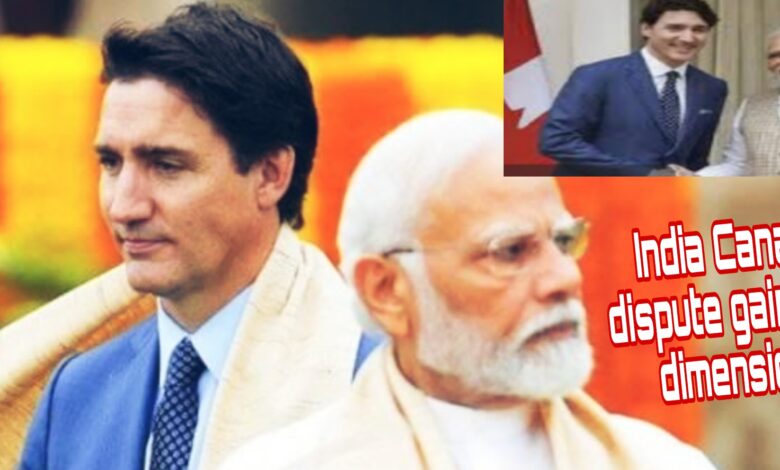India Canada dispute assume new dimensions

KUSHAL JEENA
The confrontation between India and Canada, which started with the killing of a Sikh separatist Hardeep Singh Nijjar, has now added new dimensions as the Five Eyes alliance members including the US have not only joined the dispute but are taking Canada’s side.
While this confrontation has deeply damaged Canada’s international image, on the other hand it has also affected India-US relations as the US has advised India to cooperate in the investigation being conducted by the Canadian government in this matter.
The matter is gaining international significance with the involvement of four other developed countries in this mutual dispute as Canada is a member of the Five Eyes alliance. The rule of this ancient alliance is that the issue of any one member will be considered part of the entire alliance.
Therefore, this may cause a blow to the image of India, which is considered the world’s largest democracy and follows international rules, on the global stage. Perhaps that is why the Indian government is taking vigorous steps in this direction.
The controversy gained momentum when Canadian Prime Minister Justin Trudeau accused India of involvement in the murder of a Sikh separatist leader in the Parliament there.
The Canadian government later sent back a senior diplomat from India. After this, India also gave a befitting reply to Canada by taking a similar action, which further aggravated the matter.
Both sides have also reduced mutual trade and diplomatic relations. In the recently concluded G20 meeting in Delhi, both sides gave statements blaming each other on this matter.
Canada said that it is committed to investigating the murder of its citizen and the Indian government should cooperate with it for this.
India said that it is a democratic country and neither believes nor follows the international system based on such crimes.
After this, as soon as America gave a statement in favor of Canada, Britain also started saying the same.
In June this year, Hardeep Singh Nijjar, a Sikh separatist who was the head of the separatist organization Khalistan Tiger Force, was shot dead by two masked gunmen outside a Gurudwara in Surrey, Canada.
India has many times in the past requested the Canadian government to stop the anti-India terrorist activities going on in Canada, but the Canadian government did not take any action in this matter. On the contrary, India was accused of being involved in the death of the separatist.
If knowledgeable diplomats and foreign affairs experts are to be believed, then this entire episode will not only have a deep impact on the trade of both the countries but it will also take a lot of time to improve mutual relations.
The biggest loser will be those Indian citizens who want to immigrate or settle in Canada.
After India, Canada has the largest population of Sikhs at 770,000, which is 2.1 percent of the total population there.
Relations between the two countries began to sour in 2015 when Justin Trudeau appointed 4 Sikhs as ministers in his government as soon as he became Prime Minister. Apart from this, the Trudeau government did not take any action against six Sikh Canadian citizens for supporting Khalistan, to which India had raised objections.
In the current situation, Canada’s morale is high because it has the support of the Five Eyes alliance, which is very important.
Apart from Canada, the Five Eyes alliance includes the US, Britain, Australia and New Zealand. The informal origins of this alliance lie in February 1941 during the Second World War when British and American spies met at Bletchley in Britain to break the enemy countries’ secret codes.
Till then America had not joined the world war. He entered the war on 17 May 1943 and then this alliance was formally established. After this, the intelligence agencies of both the countries first broke the secret code of Hitler’s German army, which caused great loss to Hitler. This group also later broke Japan’s military secret code. Canada joined this alliance in 1948.
Australia and New Zealand joined the Five Eyes Treaty in 1956. At that time, the then West Germany, Norway and Denmark were also members of this group. Who gradually separated from it.
Now only five countries are left in it. That is why it is called five eyes alliance. Its five members share secret military and intelligence information among themselves and make strategies related to mutual security.
The most important thing about this alliance is that they consider the disaster faced by one member country as a collective problem and act accordingly.
(These are the author’s personal views)





